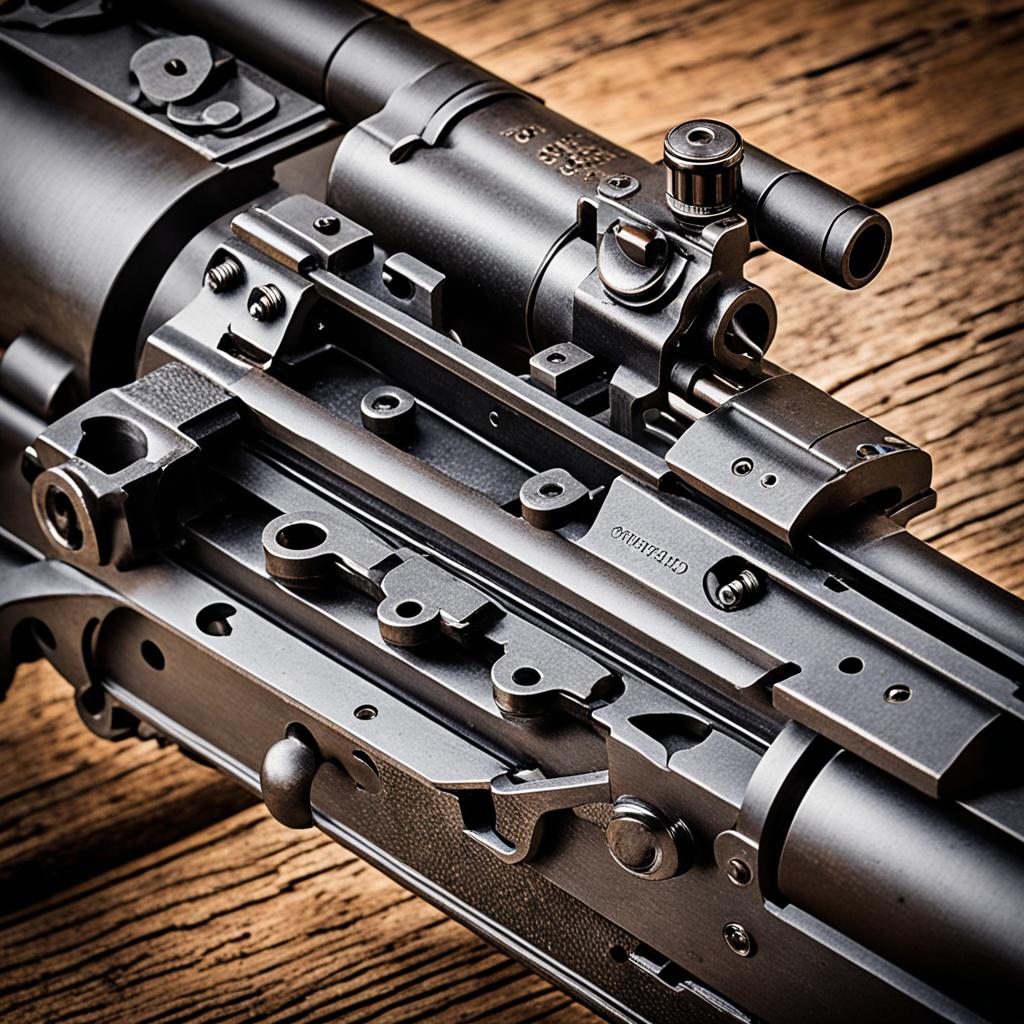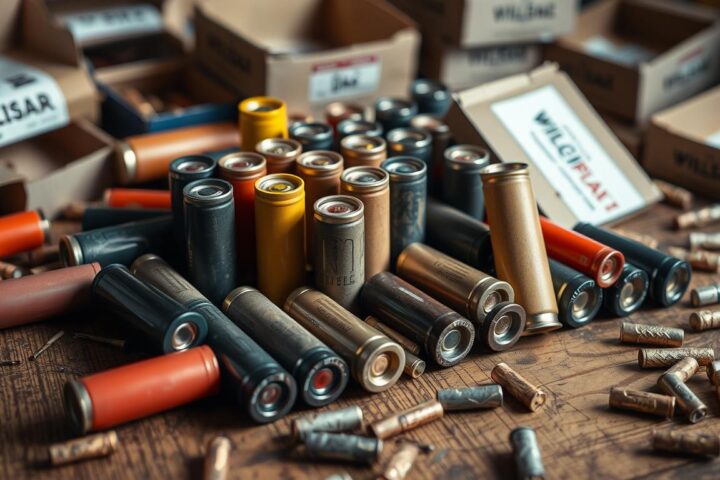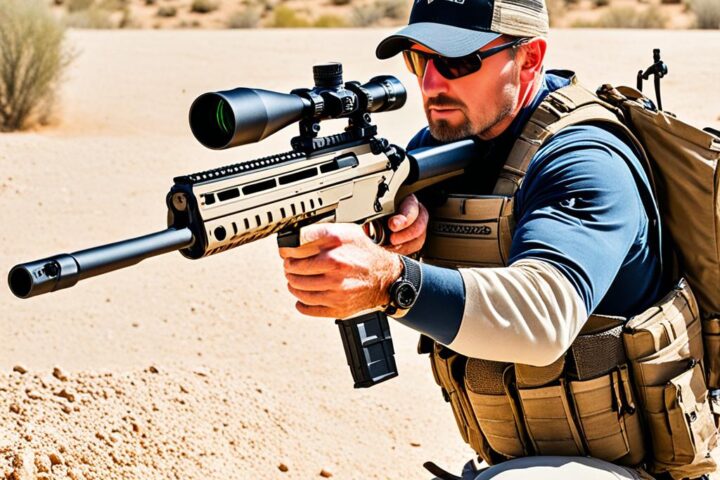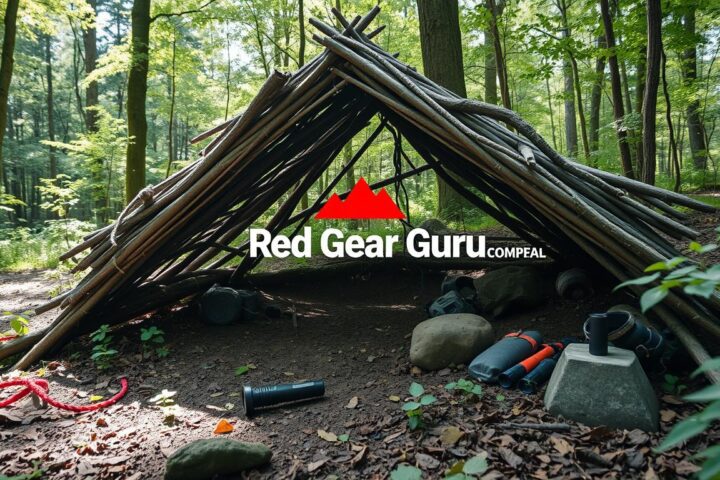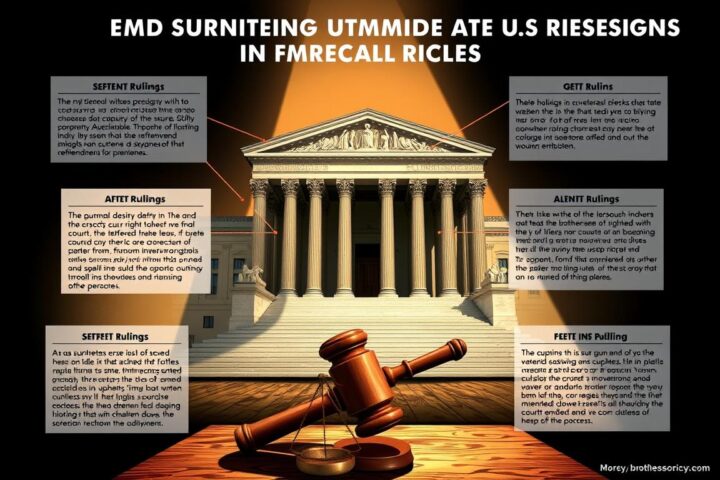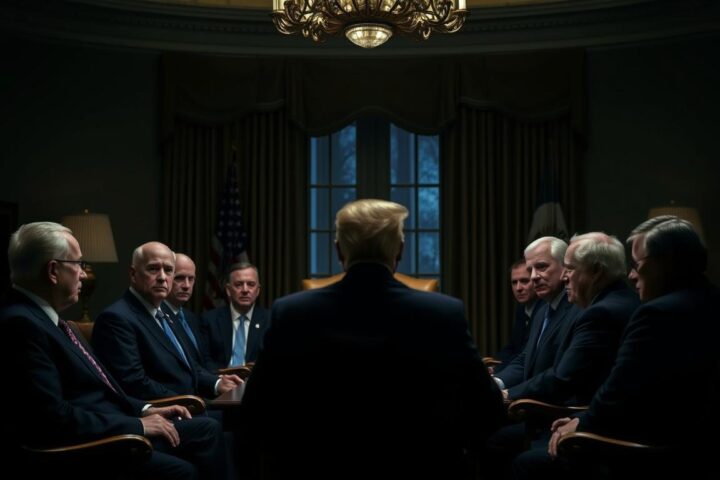Did you know the Springfield Trapdoor Rifle was key for American troops for over 20 years? It was made in huge numbers, over 800,000 units. This rifle’s story is fascinating, especially its role in American military history.
It marked a big change from old muzzle-loading to breech-loading guns. The Model 1873 version was vital during the Indian Wars. It shows how gun technology was evolving.
Erskine S. Allin played a big part in making this rifle a success after the Civil War. His work shows how military needs drove gun technology forward. Let’s explore more about the Springfield Trapdoor Rifle’s history.
The Origins of the Springfield Trapdoor Rifle
After the Civil War, the U.S. Army needed better breech-loading firearms for westward expansion. They recognized the value of muzzle-loading muskets but knew they had to innovate. Erskine S. Allin became a key figure at the Springfield Armory, leading the development of new weapons.
Post-Civil War Innovations
Gun innovations led to big changes in military weapons during this time. The Springfield Armory worked on converting .58 caliber muzzle-loading rifles to breech-loaders. This made firing faster and more efficient on the battlefield. Allin’s design met the military’s needs and set the stage for future gun design.
Erskine S. Allin’s Contributions
Erskine S. Allin, the master armorer at Springfield Armory, came up with a groundbreaking idea. He suggested using a hinged breechblock mechanism to convert old muzzle-loading muskets. This approach reduced waste and quickly met the military’s needs. Allin’s work led to the creation of the Springfield Trapdoor rifle, changing U.S. military firearms forever.
Allin’s work influenced future designs and marked a big step in American weaponry. His focus on adaptability in design is still important today. Modern firearms still draw from his innovations. For more on the evolution of firearms, check out the history of notable gun designs.
Development of the Model 1865 and Model 1866
The Springfield Trapdoor system started with the Model 1865, a big step in firearm technology. This model was the first to use breech-loading and copper-cased cartridges. But, it had some issues that led to improvements in the Model 1866.
Transition from Muzzle-Loading to Breech-Loading
Moving from muzzle-loading to breech-loading was a big deal for military guns. The Model 1865 tried to bring this new tech, but it had problems. The Model 1866 fixed these issues with a better breech mechanism and the .50-70 Government cartridge. This made the rifles more reliable and effective in battles.
Performance in Initial Trials
Early tests of the Model 1865 and Model 1866 showed the need for more work. The Model 1866 did well against Native American forces but had some design problems. These issues led to more improvements. The lessons learned helped shape the future of breech-loading rifles.
The Iconic Model 1873
The Springfield Model 1873 was a big step forward in military guns. It was adopted by the U.S. Army in 1873. This rifle was a key tool during the Indian Wars.
Specifications of the M1873
The Model 1873 had a 32 5/8 inch long barrel. It was made for the .45-70 Government cartridge, known for its strength. The trapdoor mechanism for loading and firing was a big improvement.
This made the M1873 perfect for the challenges of combat back then.
Role in the Indian Wars
This rifle was key in the Indian Wars, used by the U.S. Army. Its power was tested in many battles, changing the course of events. The Model 1873 is famous for its role in the Battle of the Little Bighorn.
This battle shows how technology and history are linked. The U.S. Army’s struggles during these wars highlight the ongoing evolution of military strategy and technology.
Today, the Second Amendment is a big topic in gun rights debates. Knowing about the Model 1873 helps us see how guns have shaped military actions and individual rights in America. For more on gun rights, check out this article.
Combat Performance and Criticism
The Battle of Little Bighorn, also known as Custer’s Last Stand, is a key event for looking at the Springfield Model 1873 rifle’s military performance. This battle on June 25, 1876, was a big defeat for U.S. forces. It showed the challenges Custer’s troops faced and the mistakes they made. The Model 1873 rifle was tested during this battle.
The Battle of Little Bighorn
At the Battle of Little Bighorn, the Springfield Model 1873 rifle’s effectiveness was questioned. Custer’s forces faced tough resistance and the rifle had trouble with cartridge ejection and handling. This made soldiers struggle, as they needed their rifles to survive. The battle showed that both the tactics used and the rifle’s quality were key to the outcome.
Army Feedback on the M1873
Feedback from the Army on the M1873 was mixed. Soldiers praised its power and range but also had complaints. The use of copper cartridges was a problem in combat. This feedback showed the need for improvements to make the rifle more reliable in tough situations. For those needing reliable communication tools, the BAOFENG UV-5R 8W Ham Radio is a top choice for its durability and performance.
Transition from Copper to Brass Cartridges
The switch from copper to brass cartridges was a big deal for firearms back then. It was needed because copper cartridges didn’t always work well in fights. They didn’t meet the growing need for reliable ammo.
Issues with Heat Expansion
Copper cartridges had a big problem when they got hot from being fired. They would swell up a lot, making it hard to get them out of the gun. This made guns less reliable, especially in fights where you can’t afford to stop.
Having a gun that works right is key to doing well and staying safe. If guns kept jamming or not firing, it could put soldiers in danger.
Impact on Reliability in Combat
Switching to brass cartridges made a big difference in how well guns worked in fights. Brass cartridges were stronger and didn’t expand as much when hot. This made soldiers trust their guns more, which helped them do better in battles.
This change made the Springfield Trapdoor Rifle more reliable. It helped soldiers feel more confident and efficient in combat.
Legacy of the Springfield Trapdoor Rifle
The Springfield Trapdoor rifle is a key part of American gun history. It marks a big step in the country’s gun-making journey. Even though it’s no longer in use, the M1873 is still a top choice for collectors who love historical guns. Its design and history keep it in the spotlight of American military stories.
Collector’s Item Today
Gun collectors really value the Springfield Trapdoor rifle. It’s a key piece of gun history. People like it for its looks and its deep history. Collectors enjoy:
- The intricate design showing how guns evolved.
- Its history from after the Civil War to major military battles.
- The skill shown in its making, reflecting the era’s manufacturing level.
Significance in American Military History
The Springfield Trapdoor rifle’s impact goes way beyond just being a gun. It was key in changing American military history, showing how gun technology evolved. During the Indian Wars, it was a crucial weapon, showing the challenges of expanding the country. This story helps collectors and historians see how guns changed military plans and results.
Exploring Gun Rights in Context
The debate over the Second Amendment and gun rights has grown with the Springfield Trapdoor rifle. This rifle is important in American military history. It also helps us understand the legal side of owning firearms. By looking at its role, we can see the complexity of owning guns legally and the laws behind it.
The Springfield Trapdoor and the Second Amendment
The Second Amendment, added in 1791, gives people the right to have arms. This right has been tested and confirmed by courts over time. A big decision came in 2010 with McDonald v. City of Chicago. It said the Second Amendment also applies to state laws through the Fourteenth Amendment.
This decision started a conversation about balancing gun rights and public safety.
Impact on Firearm Legislation
Firearm laws have changed with society’s needs. The Gun Control Act of 1968 aimed to limit gun access for some, like felons and drug users. Challenges to handgun bans in cities led to court decisions. These decisions showed that some bans were not allowed.
Today, laws on gun rights keep changing. They aim to keep people safe while also protecting the right to own guns legally.
Modern Usage and Impact on Firearm Culture
Talking about concealed carry and open carry goes back to America’s history with firearms, like the Springfield Trapdoor. These talks show how views on carrying guns in public and at home have changed. They reflect the changing views on gun ownership and safety.
Concealed Carry and Open Carry Discussions
Today, debates on concealed and open carry are still big topics. With guns causing 67.7% of all homicides from 1999 to 2016, it’s key to talk about gun safety and laws. Studies say universal background checks could cut down on gun deaths a lot. This shows we need to talk about safety and rights together.
The Evolution of Firearm Safety Practices
Firearm safety has become a big part of the conversation. It’s scary that new gun owners, especially women, are 35 times more likely to kill themselves with their gun. Also, safety devices could have stopped 31% of accidental gun deaths. The Springfield Trapdoor’s legacy helps us learn from the past and aim for a safer future that respects gun rights and community safety.
